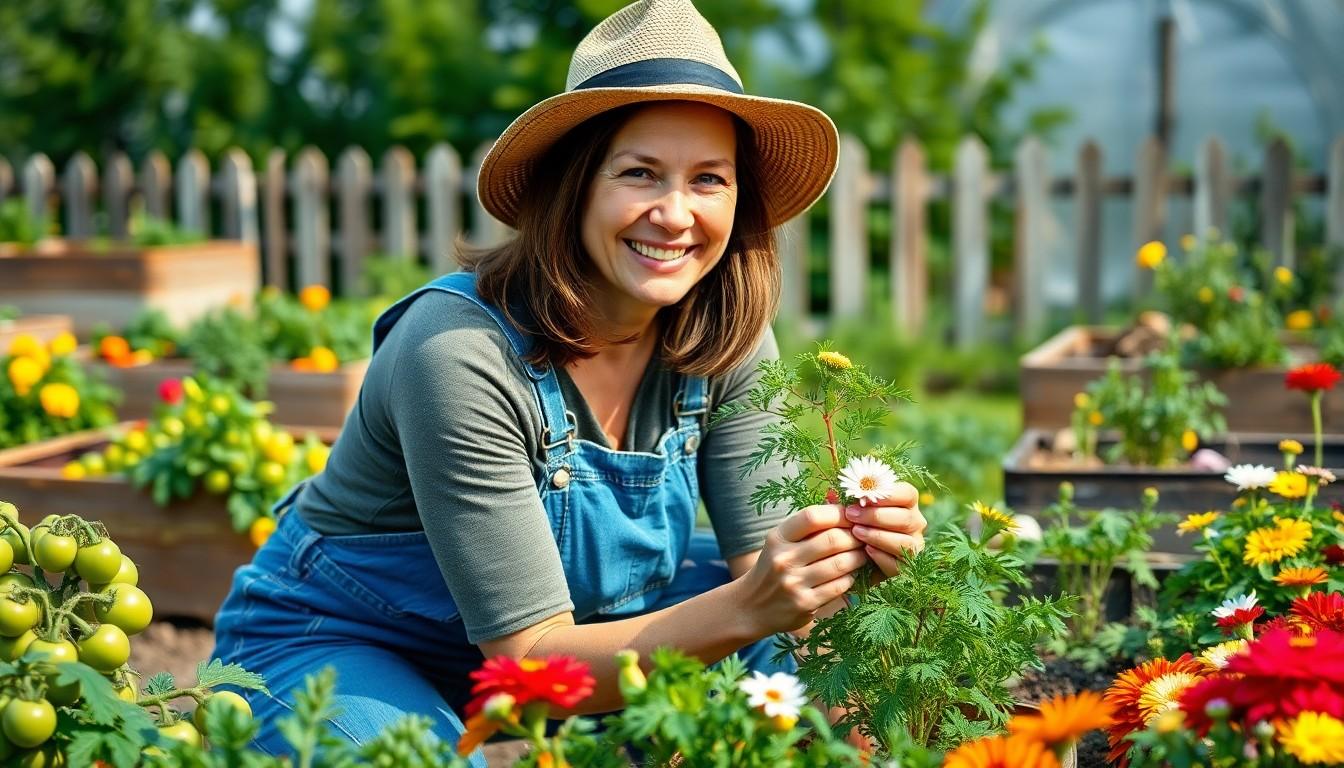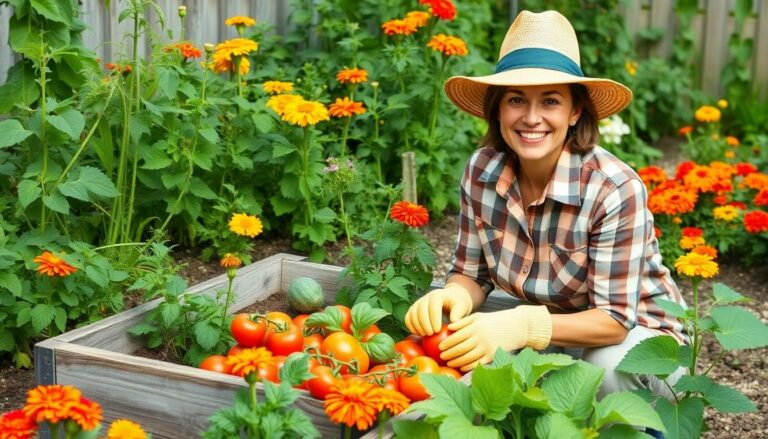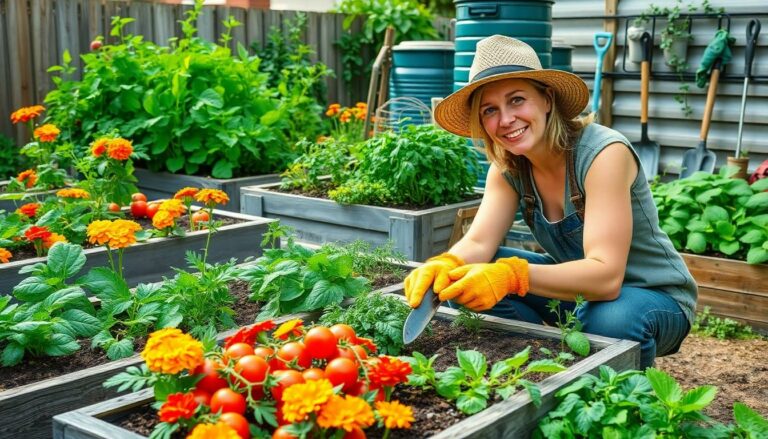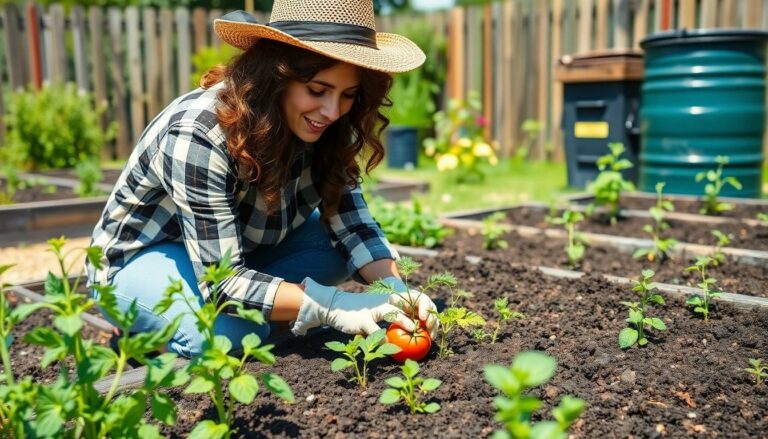Imagine stepping out your back door and into a world where fresh vegetables, vibrant flowers, and the sweet scent of herbs dance in the air. That’s the magic of homestead gardening—a delightful blend of self-sufficiency and creativity. It’s not just about growing food; it’s about cultivating a lifestyle that’s as rewarding as it is delicious.
What Is Homestead Gardening
Homestead gardening integrates self-sufficiency with creativity. This gardening approach centers on producing food, flowers, and herbs for personal consumption, promoting a healthier lifestyle. Many gardeners prefer to cultivate a diverse array of crops in their own backyards or small plots.
Vegetables like tomatoes, carrots, and peppers appear frequently in homestead gardens. In addition, vibrant flowers add beauty while attracting beneficial insects. Herbs such as basil, rosemary, and thyme enhance culinary creations and offer therapeutic benefits.
The goal of homestead gardening focuses on sustainable practices that nurture the environment. Composting, crop rotation, and organic methods define the cultivation techniques typical to this lifestyle. Moreover, gardeners prioritize local ecosystems, ensuring that their gardens benefit surrounding wildlife.
Individuals engaging in homestead gardening often find joy in preserving harvests. Canning, drying, and fermenting techniques extend the growing season and reduce food waste. Additionally, many homestead gardeners share their bounty with neighbors, fostering community connections.
Starting a homestead garden doesn’t require extensive space. Small plots, containers, or raised beds can work effectively. Through planning and patience, anyone can transform their outdoor space into a productive garden.
Ultimately, homestead gardening represents both a practice and a lifestyle. It encourages individuals to remain connected to the land while embracing creativity in their growing endeavors. With each harvest, gardeners contribute to a sustainable future and enjoy the fruits of their labor.
Benefits of Homestead Gardening
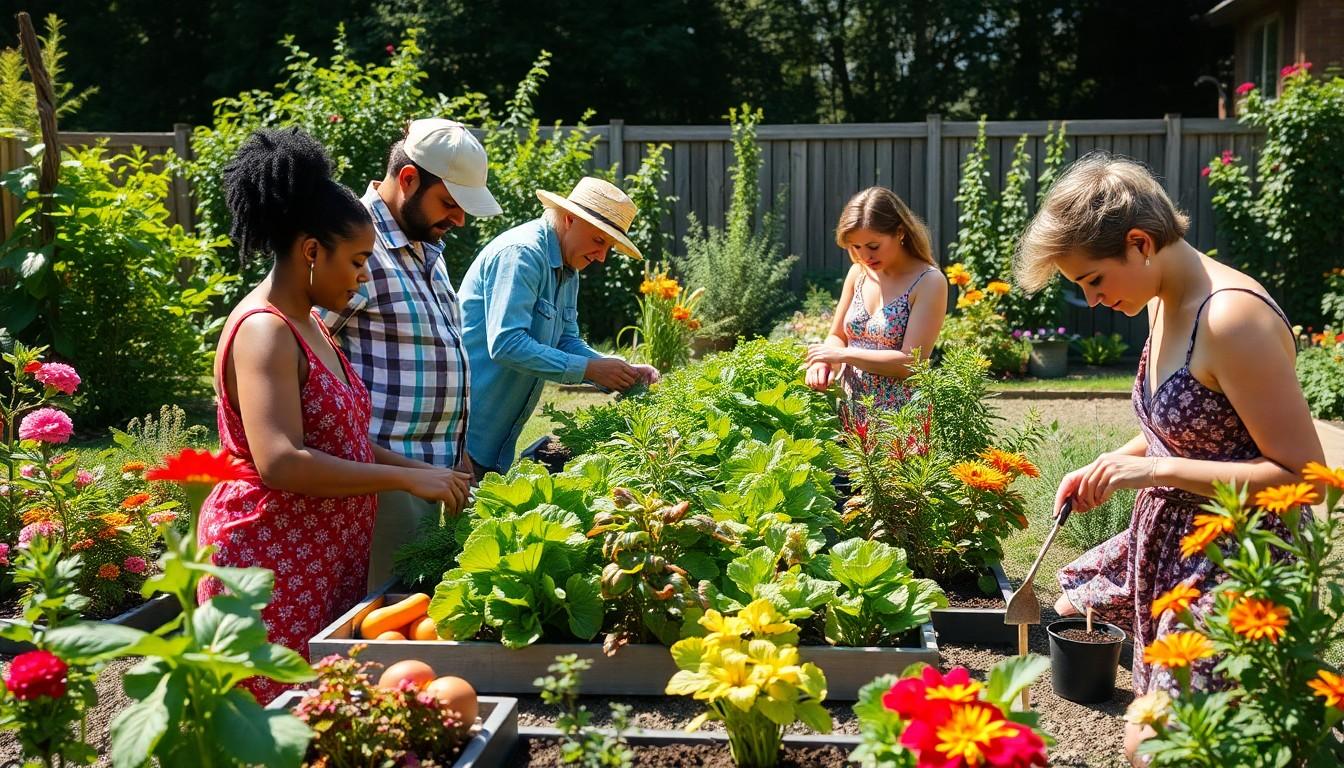
Homestead gardening offers numerous advantages that enhance both lifestyle and environment. These benefits include sustainable living practices and significant cost savings.
Sustainable Living
Sustainable living forms the backbone of homestead gardening. Individuals cultivate their own food, reducing reliance on store-bought produce, which often involves long transportation distances. Organic methods, such as composting and natural pest control, contribute to healthier ecosystems. Crop rotation prevents soil depletion, promoting long-term fertility. Engaging in this gardening approach encourages biodiversity by attracting beneficial insects. By choosing this lifestyle, one actively participates in protecting the environment and fostering sustainable practices.
Cost Savings
Cost savings emerge as another key benefit of homestead gardening. Growing vegetables and herbs at home significantly reduces grocery bills. For instance, a small raised bed can yield enough produce to cover monthly vegetable expenses. Moreover, preserving the harvest through canning or drying offers further financial advantages as individuals minimize food waste. Purchasing seeds and soil amendments represents a small upfront investment compared to store prices. Engaging with neighbors for sharing excess produce enhances community ties while reducing individual costs. Ultimately, homestead gardening provides a practical solution for budget-conscious families.
Key Components of Homestead Gardening
Homestead gardening focuses on essential components for successful growing. Understanding soil preparation, plant selection, and water management ensures a thriving garden.
Soil Preparation
Soil preparation serves as the foundation for homestead gardening. Testing soil pH and nutrient levels reveals its health. Amending soil with organic matter like compost enhances fertility, improving drainage and structure. Tilling the soil aerates it, promoting root growth. Mulching protects soil moisture and suppresses weeds, creating an ideal environment for plants.
Plant Selection
Choosing the right plants fits the home gardener’s needs. Selecting varieties that thrive in local conditions maximizes yield. Heirloom vegetables deliver unique flavors and resist pests better than modern hybrids. Incorporating companion planting, such as pairing tomatoes with basil, boosts growth and pest control. Diversified plant selection contributes to a vibrant and productive garden ecosystem.
Water Management
Water management plays a critical role in gardening success. Implementing efficient irrigation methods helps conserve water while providing adequate moisture. Drip irrigation delivers water directly to plant roots, minimizing evaporation. Rainwater collection systems reduce reliance on municipal sources and encourage sustainability. Regular monitoring of moisture levels prevents over- or under-watering, keeping plants healthy and vibrant.
Techniques for Successful Homestead Gardening
Successful homestead gardening relies on strategic techniques that enhance plant growth and sustainability. Two crucial methods include companion planting and crop rotation.
Companion Planting
Companion planting maximizes space and promotes plant health. Combining specific plants can enhance growth and deter pests. For instance, basil planted near tomatoes boosts flavor and wards off harmful insects. Marigolds work well alongside various vegetables, attracting pollinators while repelling nematodes. Selecting plants that benefit each other creates a harmonious garden environment. Enhancing biodiversity through these relationships encourages a thriving garden ecosystem. Gardeners often observe healthier plants and increased yields as a result of this practice.
Crop Rotation
Crop rotation prevents soil depletion and reduces pest buildup. Alternating plant families in specific areas each growing season maintains nutrient balance. For example, legumes, which fix nitrogen in the soil, should follow heavy feeders like tomatoes and corn. This change benefits soil health and minimizes disease recurrence. Implementing a rotation plan keeps the soil fertile and productive over time. Including cover crops in the rotation can further enhance soil structure and protect against erosion. Consistently practicing crop rotation results in healthier plants and increased yields.
Challenges in Homestead Gardening
Homestead gardening presents several challenges that gardeners encounter regularly. Addressing these challenges is crucial for a successful gardening experience.
Pest Management
Managing pests effectively remains a common struggle in homestead gardening. Gardeners rely on various strategies to control pests while maintaining organic practices. Beneficial insects, such as ladybugs and lacewings, provide natural pest control by preying on harmful insects. Implementing crop rotation and companion planting also minimizes pest infestations. Scouting for early signs of pest damage allows for timely interventions, reducing the potential for significant crop loss. Employing homemade solutions, like garlic spray, can deter unwanted pests while avoiding chemical treatments.
Weather Conditions
Weather conditions pose significant challenges for homestead gardeners. Temperature fluctuations, excessive rainfall, and drought can impact plant health and yields. Early frosts threaten delicate seedlings, while prolonged heat spells stress mature plants. Emphasizing the importance of seasonally appropriate planting can mitigate the effects of sudden weather changes. Utilizing row covers provides additional warmth during cold spells, while mulching helps retain soil moisture during dry periods. Adapting gardening practices to local climate conditions is essential for ensuring a productive and resilient garden.
Enhances Personal Well-being
Homestead gardening offers a fulfilling way to cultivate food and connect with nature. By embracing sustainable practices and focusing on self-sufficiency, individuals can enjoy fresh produce while nurturing the environment. This gardening approach not only enhances personal well-being but also strengthens community ties through the sharing of harvests.
With techniques like companion planting and crop rotation, gardeners can maximize their yields and maintain healthy soil. Whether in a small backyard or on a balcony, anyone can start their homestead gardening journey. Ultimately, it’s about creating a lifestyle that values creativity, sustainability, and the joy of growing one’s own food.

